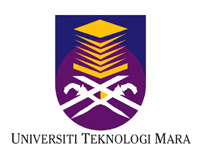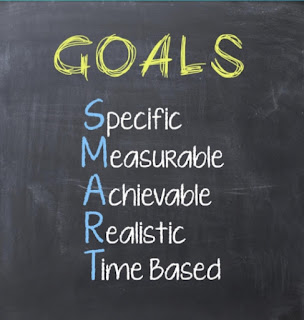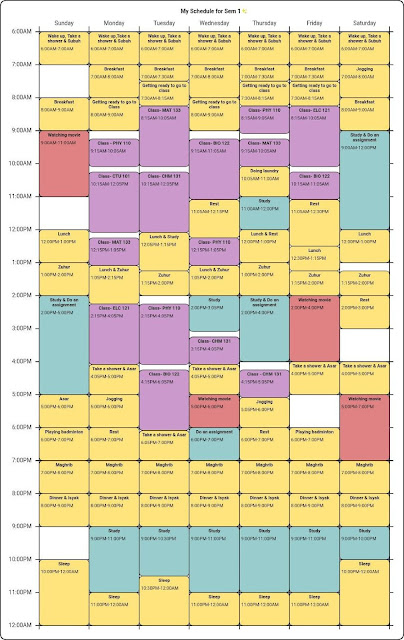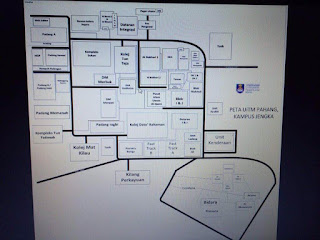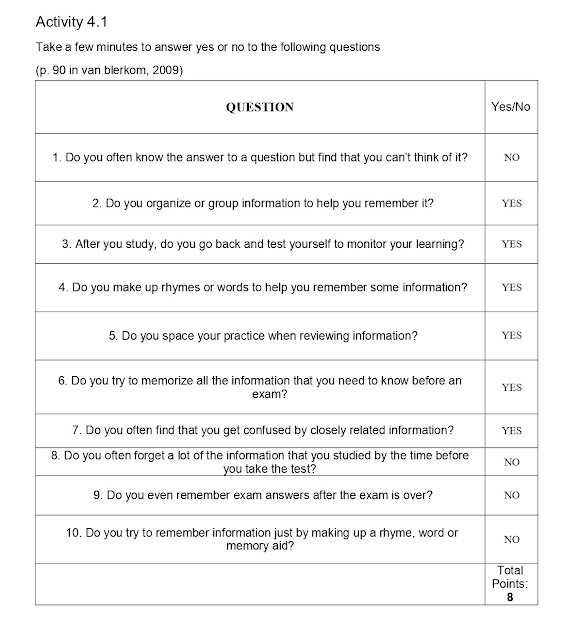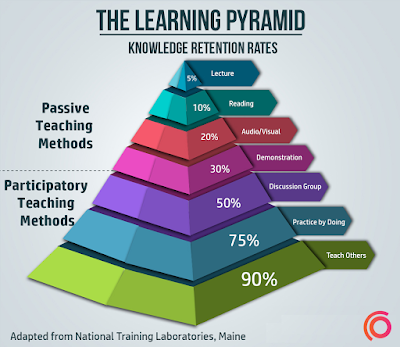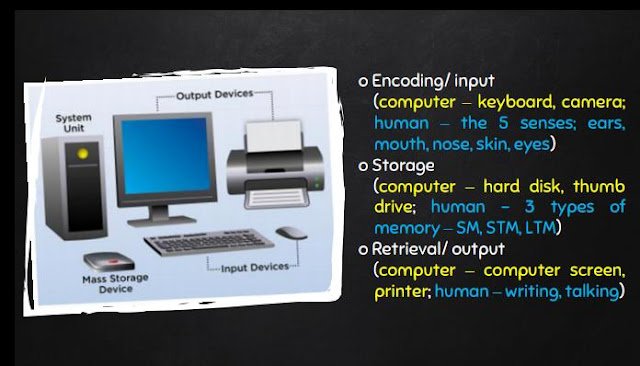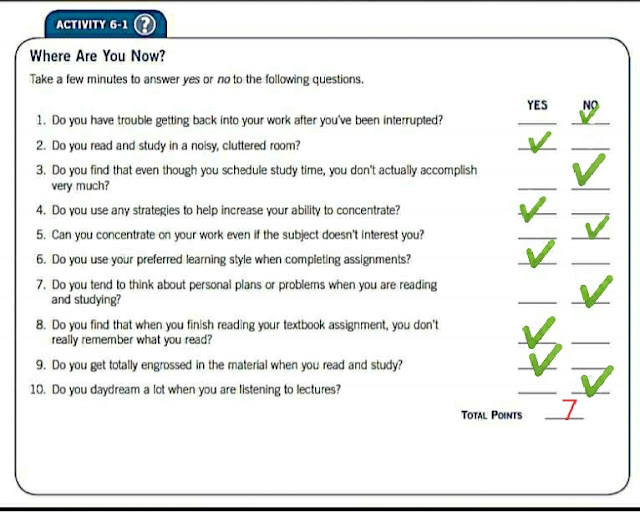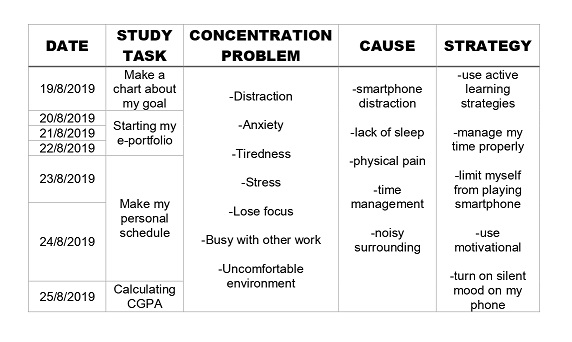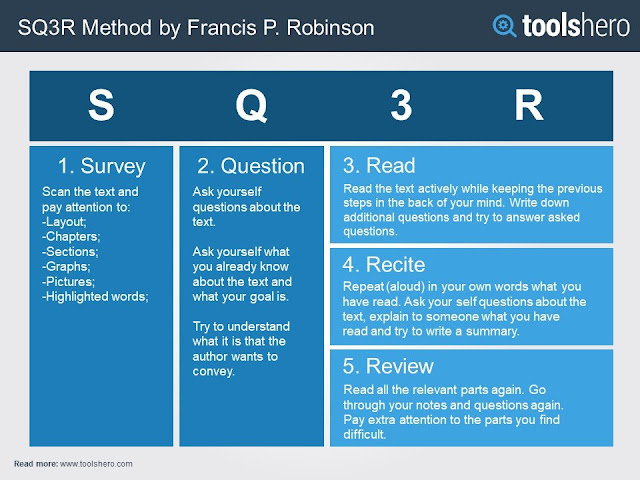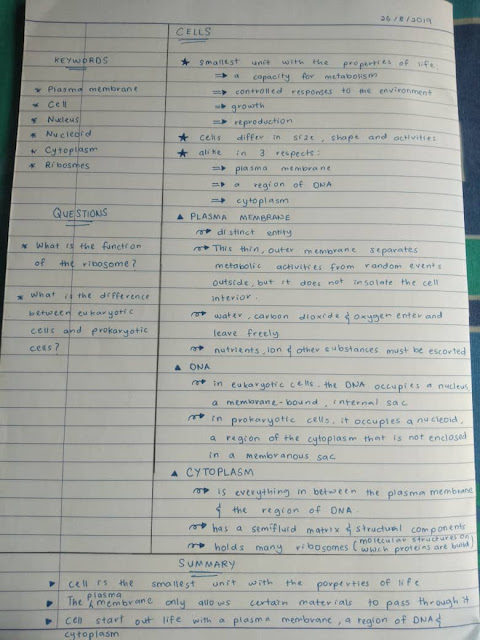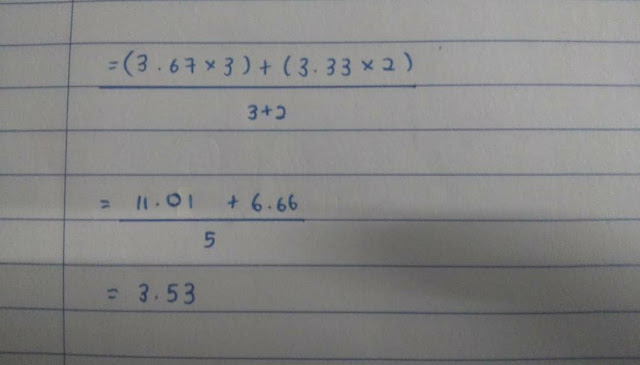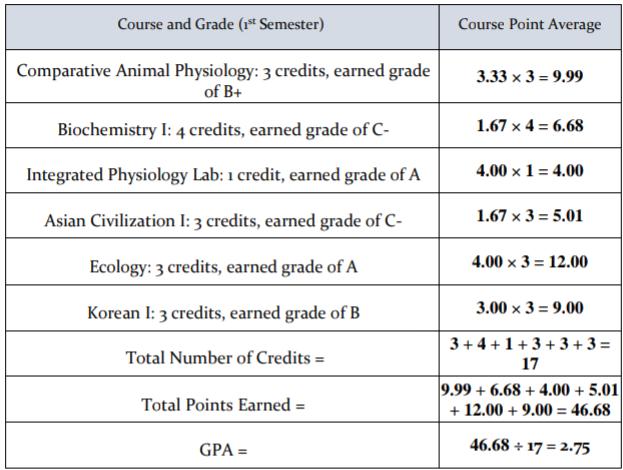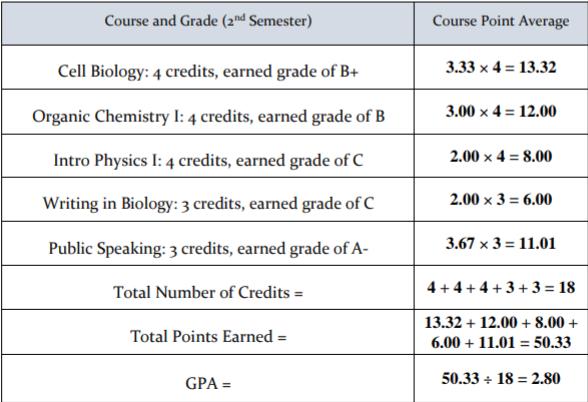UED 102 - STUDY SKILLS
WELCOME TO MY BLOG
⧭ INTRODUCTION
Assalamualaikum and hi,
My name is FARAH NUR EZWA BINTI ZULKEFLE. I am 18 years old. I am a student from UiTM PAHANG, CAMPUS JENGKA. I'm one of the student in Diploma in Science. The purpose I'm doing this blog because I was given a task from my lecturer to do this portfolio. This portfolio is more to introduce the student about what is UED 102 or known as study skills. In university life, all students want to make their parents happy by getting the dean's award every semester, so study skills is very important for all students to achieve their goals.
HERE IS THE CONTENTS OF UED 102:
↪GETTING READY TO LEARN
↪GOAL SETTING: LEARNING MANAGEMENT SYSTEM
↪TIME MANAGEMENT: ORGANIZATIONAL SKILLS
↪GETTING TO KNOW THE CAMPUS
↪MEMORY LEARNING: IMPROVING CONCENTRATION
↪TAKING LECTURE NOTES
↪ACADEMIC INTEGRITY, PERFORMANCE
0BJECTIVES:
↪ APPLY KNOWLEDGE OF STUDY SKILLS IN ACADEMIC SETTINGS
↪ DEVELOP A PERSONAL STUDY SKILLS PORTFOLIO
***********************************************************************************************
PLACE : DEWAN KULIAH 1 (DK 1)
BY : DR MOHAMAD SYAFIE BIN MAHMOOD
DATE : 7 AUGUST 2019
TOPIC 1: GETTING READY TO LEARN
⇛ MAKING THE
TRANSITION FROM SCHOOL TO UNIVERSITY
 |
| by google images |
WHAT IS THE DIFFERENCE BETWEEN BEING A HIGH SCHOOL STUDENT AND UNIVERSITY STUDENT ?
ACTIVITY 1: IDENTIFY YOUR LEARNING STYLE
 |
| by google images |
 |
| by google images |
By answering the quiz that has been given to me by Dr Mohamad Syafie
http://www.educationplanner.org/students/self-assessments/learning-styles-quiz.shtml
This is the result:
•• Auditory: 35%
•• Visual: 60%
•• Tactile: 5%
You are a Visual learner! Check out the information below, or view all of the learning styles.
Visual
If you are a visual learner, you learn by reading or seeing pictures. You understand and remember things by sight. You can picture
what you are learning in your head, and you learn best by using methods that are primarily visual. You like to see what you are
learning.
As a visual learner, you are usually neat and clean. You often close your eyes to visualize or remember something, and you will find
something to watch if you become bored. You may have difficulty with spoken directions and may be easily distracted by sounds.
You are attracted to color and to spoken language (like stories) that is rich in imagery.
Here are some things that visual learners like you can do to learn better:
• Sit near the front of the classroom. (It won't mean you're the teacher's pet!)
• Have your eyesight checked on a regular basis.
• Use flashcards to learn new words.
• Try to visualize things that you hear or things that are read to you.
• Write down key words, ideas, or instructions.
• Draw pictures to help explain new concepts and then explain the pictures.
• Color code things.
• Avoid distractions during study times
7 STEPS TO
UNIVERSITY SUCCESS
1. Stay up to date with your work/assignment
➧ If lecturer give an assignment, we shouldn't postpone the assignment. So, our work will more quality.
2. Attend all classes
➧ This is important because all the points that lecturer give in class we'll use it during the exam. Beside that, most of the test question will come from lecturer.
3. Become an active learner
➧ We must be an active person in university not just in academic but also in kokurikulum.
4. Participate in class
➧ In class, we cannot be shy. If students have any questions to ask the lecturer, just ask. If have any activity in class or to represent the class, we must join it.
5. Get to know your lecturers
➧ In university, lecturers like our parents. So, we must know our lecturers especially their name.
6. Form study groups with friends
➧ This strategy is one of the important steps to success in university. This is because if we study in a group, we can exchange ideas and knowledge. Other than that, it also can makes it easier for students to remember all the points.
7. Be receptive to change
➧ Always change ourselves to become a better person such as change our study strategies if we never see the improvement in our exam.
1. Stay up to date with your work/assignment
➧ If lecturer give an assignment, we shouldn't postpone the assignment. So, our work will more quality.
2. Attend all classes
➧ This is important because all the points that lecturer give in class we'll use it during the exam. Beside that, most of the test question will come from lecturer.
3. Become an active learner
➧ We must be an active person in university not just in academic but also in kokurikulum.
4. Participate in class
➧ In class, we cannot be shy. If students have any questions to ask the lecturer, just ask. If have any activity in class or to represent the class, we must join it.
5. Get to know your lecturers
➧ In university, lecturers like our parents. So, we must know our lecturers especially their name.
6. Form study groups with friends
➧ This strategy is one of the important steps to success in university. This is because if we study in a group, we can exchange ideas and knowledge. Other than that, it also can makes it easier for students to remember all the points.
7. Be receptive to change
➧ Always change ourselves to become a better person such as change our study strategies if we never see the improvement in our exam.
TOPIC 2: GOAL SETTING (LEARNING MANAGEMENT SYSTEM)
WHAT IS A GOAL?
⇲ GOALS are the ends toward which we direct our effort
⇲ GOALS are things we want to achieve
WHY DO YOU NEED GOALS?
⇲ GOALS are important in university life because they can help motivate you to do work, attend classes and study for exams to make sure you can achieve what you want.
➹ Your GOALS should be S.M.A.R.T !!!!!!!!!!!!
S - SPECIFIC
⧬ Your goals should be clear and specific, so it can make it easier to focus on what you want to achieve.
⧬ It is important because it can helps you to stay focus and feel excited when your goals getting closer. It also can make you more effort to achieve your goals.
A - ACHIEVABLE
⧬ You have to work hard and sacrifice everything to achieve your goal. You must also choose a goal that suits your abilities.
R - REALISTIC
⧬ Your goal must be realistic so your future will be brighter.
T - TIME BASED
⧬ It's important because we have a target date to achieve our goal. So, we'll do much effort to reach our goal before the deadlines.
ACTIVITY 2: MANAGING YOUR GOAL
I was given a task from Dr Syafie to write my goal statements using the Five Step approach;

my goals

TOPIC 3: TIME MANAGEMENT
(ORGANIZATIONAL SKILLS)
 |
| by google images |
HOW DO YOU MANAGE YOUR TIME?
➭ Keep a time log every day for one week
➭ Create a schedule
➭ Obtain a calendar or planner
➭ Prioritise your tasks
‘TIME IS GOLD’
WE HAVE MANAGE OUR TIME EFFECTIVELY, ESPECIALLY AT WORK
WHAT IS TIME?
→According to Wikipedia, TIME is a component quantity of various measurements used to sequence events, to compare the duration of events or the intervals between them, and to quantify rates of change of quantities in material reality or in the conscious experience.
→ Good time management is very important in preventing us from wasting time because time is gold.
WHAT IS PROCRASTINATION?
→ Procrastination is the act of putting off intentionally the doing of something that should be done.
→ Procrastination is one of the traits we need to avoid because there are many consequences such as poor quality work.
→ There are several reasons why people like to do with procrastination:
⧫ a very buzy person
⧫ laziness
⧫ feel that last-minute work is better
ACTIVITY 3: PERSONAL SCHEDULE
- I got a task from dr syafie to prepare a personal schedule.
ACTIVITY 4: MANAGING SO MUCH WORK
- By using the schedule in activity 3, we must identify the priority and urgency of each activity.
- Activity 3 & 4 will be merged together in one schedule.
↺ BLUE: Important & urgent
↺ PINK: Important but not urgent
↺ ORANGE: Less important but urgent
↺ GREEN: Not important & not urgent
↺ PURPLE: Important & urgent
↺ BLUE: Important but not urgent/Important & urgent
↺ PINK: Not important & not urgent
↺ YELLOW: Important but not urgent
PLACE: DEWAN KULIAH 1 ( DK 1)
BY : DR NUR BAIZURA MOHAMED
DATE : 14 AUGUST 2019
TOPIC 4: GETTING TO KNOW THE CAMPUS
by google images
maps
List of Faculty in UiTM Cawangan Pahang,Campus Jengka:
➧ Faculty of Applied Science
➧ Faculty of Accounting
➧ Faculty of Civil Engineering
➧ Faculty of Business Management
➧ Faculty of Sport Science & Recreation
➧ Faculty of Plantation & Agrotechnology
- As a science student, we have our classes at the IST building which is block Cendana. Beside that, we also spend a lot of time in science labs.
- UiTM Jengka also have HEA and HEP buildings. HEA and HEP are very important to all students in UiTM Jengka. So all students must know where HEA and HEP are located.
- We also have our beautiful mosque which is Uwais Al-Qarni
- In UiTM Pahang Campus Jengka, we have 2 libraries which is Al-bukhari 1 & Al- Bukhari 2.
↪ In Al-Bukhari 1, we have:
⧭ 818 seats
⧭ 2 discussion rooms (we can booking)
⧭ IT room (80 computers)
↪ We have 3 zone in the library:
⧭ Quiet zone
⧭ Silent zone
⧭ Open Discussion zone
ACTIVITY 5: 5 IMPORTANT PLACES IN UiTM JENGKA
We have been given a task by our lecturer to do a video within 10 minutes in group to introduce 5 important places in UiTM Pahang Campus Jengka. We have to post it on YouTube. So please watch it. I hope you will enjoy it. Link in down below:
https://youtu.be/75uikiuAJvc
PLACE: DEWAN KULIAH 1 (DK 1)
BY : DR AGUSTONO WIBOWO
DATE : 14 AUGUST 2019
TOPIC 5: MEMORY LEARNING (IMPROVING
CONCENTRATION)
This topic enable students to learn the basic processes of memory and apply the memory skills in their learning.
CONTENT:
↝ understanding memory processes
↝ memory strategies
↝ understanding concentration
↝ strategies for improving concentration
↝ reading/study system(SQ3R)
"REMEMBERING IS HARD WORK, AND MEMORY
TECHNIQUES DO NOT NECESSARILY MAKE IT EASY, THEY JUST MAKE IT MORE EFFECTIVE" - KENNETH L.H., 1996
ACTIVITY 6: ANSWER THE QUESTION
↪ The human brain has 100 billion brain cells.
↪ In this life, our brains will manage hundreds of data per secound
↪ Total right brain capacity is 1OO times left brain
LEARNING PYRAMID
MEMORY PROCESSES
↭ Memory is the retention of information over time or the mind stores and remember information (mental processes).
↭ Memory is like computer software.
↭ Brain is the organ , like computer hardware.
THE STORAGE (RETAIN INFORMATION)
3 types of memory:
→ Sensory Memory(SM)
↣ the shortest-term element of memory
↣ the stimuli come through our five sense :
-hearing
-smell
-taste
-sight
-touch
↣ sensory memory has a high capasity but fades quickly
→ Short-term Memory(STM)
↣ it has a small amount of information
↣ can recall easily for a short time
↣ short-term memories can become long-term memory but we must rehearse.
→ Long-term Memory(LTM)
↣ has unlimited capasity
↣ LTM is usually labelled as explicit memory
↣ if the information were not used for a long time, we will forget it.
ACTIVITY 7: CLOSE YOUR EYES
- Dr Agustono asked us to look at the following list of numbers for 10 seconds, then we must remember and try to write the numbers on a piece of paper.
- This activity indicates what our memory strength.
- This is my answer. I only can remember 6 numbers out of the numbers shown by Dr Agustono.
MEMORY STRATEGIES
Memory strategies can help us to remember and recall something, but nowadays people easily forget something especially students. So, how forgetting can happen?
Here are some reasons:
- students did not pay attention in class
- did a last-minute study
- did not have good strategies
- did not make revisions
How to improve Your Memory?
- pay attention in class
- always do revisions
- elaboration strategies (acronyms,imagery)
- prepare a schedule
- identify our learning styles
ACTIVITY 8: ANSWER THE QUESTION
CONCENTRATION
- Concentration is focusing your attention on what you are doing.
Causes of poor concentration:
- uncomfortable environment
- distractions from others
- lack of motivation
- smartphone
Strategies to Improve Concentration:
- in class, we must turn on the silent mode on our phone
- use active learning strategies
- sit in front of the class
- use motivational
ACTIVITY 9: CONCENTRATION CHART
Our lecturer asked us to complete the Concentration Chart.
READING/ STUDY SYSTEM (SQ3R/P2R)
- Reading academic materials are different with general reading tasks like story books.
- Study system can help in comprehending reading academic materials because of 3 factors:
1. active learning strategies
2. use of multisensory methods (refer to the learning pyramid)
3. immediate steps for self-testing and review
SQ3R: SURVEY-QUESTION-READ-RECITE-REVIEW
- according to Wikipedia, SQ3R is a reading comprehension method named for its five steps: survey, question, read, retrieve, and review.
- The method was introduced by Francis P. Robinson, an American education philosopher in his 1946 book Effective Study.
PLACE: DEWAN KULIAH 1 (DK 1)
BY: MISS WAN NOOR AINUN BINTI BAHARUDDIN
DATE: 16 AUGUST 2019
TOPIC 6: TAKING LECTURE NOTES
WHY TAKE LECTURE NOTES?
↦ Only 10% of an audio lecture may last in memory, but students who take their notes can recall about 80% of a lecture.
↦ helps your writing
↦ helps understanding
↦ helps memory
↦ helps exam revision
↦ provides an accurate record of information
HOW TO TAKE LECTURE NOTES?

pinterest.com
Prepare before taking notes
↪ we must read the text assignment before class
↪ review the notes from the day before
↪ make sure you have paper, text, pens, handout
↪ leave spaces between the lines so that you can add information later
Become an active listener
↪ physically and mentally focused on the lecturer
↪ sit in the front of the class
↪ read the text assignment before the lecture
↪ review your last set of notes before the lecture begins
↪ decide that you want to listen
↪ making eye contact with the speaker
↪ avoiding distraction
↪ ask and answer question
⧭ Key actions to note as you observe your instructor
- be alert to repetition
- watch the board or overhead projector
- notice the instructor's level
- let go of judgements about lecture styles
EFFECTIVE NOTE TAKING SYSTEM
1. Cornell system
2. The informal outline
3. The block method
4. The modified block method
5. Mapping method
CORNELL METHOD

acadoceo.com
INFORMAL OUTLINE

easybib.com
BLOCK METHOD

SITI NAFISAH MD RASHID(UiTM CAWANGAN NEGERI SEMBILAN KAMPUS KUALA PILAH)
MAPPING METHOD

sissi92culc.wordpress.com
ACTIVITY 10: TAKING NOTES USING CORNELL SYSTEM/ INFORMAL OUTLINE/ BLOCK METHOD/ MODIFIED BLOCK METHOD/ MAPPING METHOD
- our lecturer gives us a task to make a note using one of the methods. So I decided to make a note using Cornell Method.
This topic enable students to learn the basic processes of memory and apply the memory skills in their learning.
CONTENT:
↝ understanding memory processes
↝ memory strategies
↝ understanding concentration
↝ strategies for improving concentration
↝ reading/study system(SQ3R)
"REMEMBERING IS HARD WORK, AND MEMORY
TECHNIQUES DO NOT NECESSARILY MAKE IT EASY, THEY JUST MAKE IT MORE EFFECTIVE" - KENNETH L.H., 1996
ACTIVITY 6: ANSWER THE QUESTION
↪ The human brain has 100 billion brain cells.
↪ In this life, our brains will manage hundreds of data per secound
↪ Total right brain capacity is 1OO times left brain
LEARNING PYRAMID
MEMORY PROCESSES
↭ Memory is the retention of information over time or the mind stores and remember information (mental processes).
↭ Memory is like computer software.
↭ Brain is the organ , like computer hardware.
THE STORAGE (RETAIN INFORMATION)
3 types of memory:
→ Sensory Memory(SM)
↣ the shortest-term element of memory
↣ the stimuli come through our five sense :
-hearing
-smell
-taste
-sight
-touch
↣ sensory memory has a high capasity but fades quickly
→ Short-term Memory(STM)
↣ it has a small amount of information
↣ can recall easily for a short time
↣ short-term memories can become long-term memory but we must rehearse.
→ Long-term Memory(LTM)
↣ has unlimited capasity
↣ LTM is usually labelled as explicit memory
↣ if the information were not used for a long time, we will forget it.
ACTIVITY 7: CLOSE YOUR EYES
- Dr Agustono asked us to look at the following list of numbers for 10 seconds, then we must remember and try to write the numbers on a piece of paper.
- This activity indicates what our memory strength.
- This is my answer. I only can remember 6 numbers out of the numbers shown by Dr Agustono.
- This is my answer. I only can remember 6 numbers out of the numbers shown by Dr Agustono.
MEMORY STRATEGIES
Memory strategies can help us to remember and recall something, but nowadays people easily forget something especially students. So, how forgetting can happen?
Here are some reasons:
- students did not pay attention in class
- did a last-minute study
- did not have good strategies
- did not make revisions
How to improve Your Memory?
- pay attention in class
- always do revisions
- elaboration strategies (acronyms,imagery)
- prepare a schedule
- identify our learning styles
ACTIVITY 8: ANSWER THE QUESTION
CONCENTRATION
- Concentration is focusing your attention on what you are doing.
Causes of poor concentration:
- uncomfortable environment
- distractions from others
- lack of motivation
- smartphone
Strategies to Improve Concentration:
- in class, we must turn on the silent mode on our phone
- use active learning strategies
- sit in front of the class
- use motivational
ACTIVITY 9: CONCENTRATION CHART
Our lecturer asked us to complete the Concentration Chart.
READING/ STUDY SYSTEM (SQ3R/P2R)
- Reading academic materials are different with general reading tasks like story books.
- Study system can help in comprehending reading academic materials because of 3 factors:
1. active learning strategies
2. use of multisensory methods (refer to the learning pyramid)
3. immediate steps for self-testing and review
SQ3R: SURVEY-QUESTION-READ-RECITE-REVIEW
- according to Wikipedia, SQ3R is a reading comprehension method named for its five steps: survey, question, read, retrieve, and review.
- The method was introduced by Francis P. Robinson, an American education philosopher in his 1946 book Effective Study.
PLACE: DEWAN KULIAH 1 (DK 1)
BY: MISS WAN NOOR AINUN BINTI BAHARUDDIN
DATE: 16 AUGUST 2019
TOPIC 6: TAKING LECTURE NOTES
WHY TAKE LECTURE NOTES?
↦ Only 10% of an audio lecture may last in memory, but students who take their notes can recall about 80% of a lecture.
↦ helps your writing
↦ helps understanding
↦ helps memory
↦ helps exam revision
↦ provides an accurate record of information
HOW TO TAKE LECTURE NOTES?

pinterest.com

Prepare before taking notes
↪ we must read the text assignment before class
↪ review the notes from the day before
↪ make sure you have paper, text, pens, handout
↪ leave spaces between the lines so that you can add information later
Become an active listener
↪ physically and mentally focused on the lecturer
↪ sit in the front of the class
↪ read the text assignment before the lecture
↪ review your last set of notes before the lecture begins
↪ decide that you want to listen
↪ making eye contact with the speaker
↪ avoiding distraction
↪ ask and answer question
⧭ Key actions to note as you observe your instructor
- be alert to repetition
- watch the board or overhead projector
- notice the instructor's level
- let go of judgements about lecture styles
EFFECTIVE NOTE TAKING SYSTEM
1. Cornell system
2. The informal outline
3. The block method
4. The modified block method
5. Mapping method
CORNELL METHOD
 |
| acadoceo.com |
INFORMAL OUTLINE
 | |||||
| easybib.com |
BLOCK METHOD
 |
| SITI NAFISAH MD RASHID(UiTM CAWANGAN NEGERI SEMBILAN KAMPUS KUALA PILAH) |
MAPPING METHOD
 |
| sissi92culc.wordpress.com |
ACTIVITY 10: TAKING NOTES USING CORNELL SYSTEM/ INFORMAL OUTLINE/ BLOCK METHOD/ MODIFIED BLOCK METHOD/ MAPPING METHOD
- our lecturer gives us a task to make a note using one of the methods. So I decided to make a note using Cornell Method.
TOPIC 7: ACADEMIC INTEGRITY
& PERFORMANCE

myidzhamrock.wordpress.com

TABLE OF CONTENT:
. Plagiarism
. Types of plagiarism
. How to prevent plagiarism
. Calculating GPA
PLAGIARISM
 |
| dictionary.cambridge.org |
➽ Plagiarism
is "an act of using or closely imitating the language and thoughts of
another author without authorization and the representation of that
author's work as one's own, as by not crediting the original author."
 |
| Siti Nafisah Md Rashid(UiTM Cawangan Negeri Sembilan Kampus Kuala Pilah) |
HOW TO PREVENT PLAGIARISM?
- Plagiarism can be avoided with 2 steps:
- ➨ Planning
- ➨Writting
- DOCUMENTING SOURCES: USING APA FORMAT
Why use APA format?
There are several reason why we use APA format:
- it can allows reader to cross-reference your sources easily
- protect yourself from plagiarism
APA Styles
- APA have two styles which is:
↣ Reference page
↣ Parenthetical Citations ( when quoting any words that are not your own)
- CALCULATING GPA
- What is the meaning of GPA?
- - GPA stands for Grade Point Average
- - it represent a student's academic achievement
- This is formula to calculate GPA:
Follow these steps to find GPA weighted by credit hours:
1. Multiply each numeric grade value by the number of credits the course was worth.
2. Add these numbers together.
3. Divide by total number of credits you took.
4. Your GPA
For example:
- - CGPA stands for Cumulative Grade Point Average
- - it refers to the overall GPA
FAILURE & DISMISSAL
ACTIVITY 11: GPA WORKSHEET
1. Calculate the GPA for Amelia Ameer for her first semester:
2. Calculate what would have happened if Amelia had earned a B in Chemistry.
3. What is the difference in GPA?
4. Now calculate Amelia GPA for the next semester.
5. What would happen if Amelia had received a D in Cell Bio instead of the B+ ?
6. What is the difference in GPA ?
7. What is the difference in CGPA ?
8. What does Amelia have to do in order to achieve a GPA of 3.00 in the second semester if her CGPA falls bellow 2.50 in the first semester ?
- Amelia must score at least B- in Intro Physics and Writing in Biology.
 |
| by google images |
